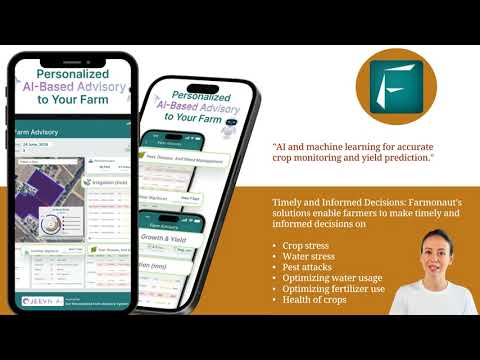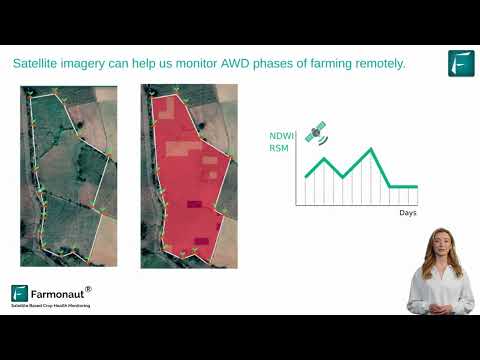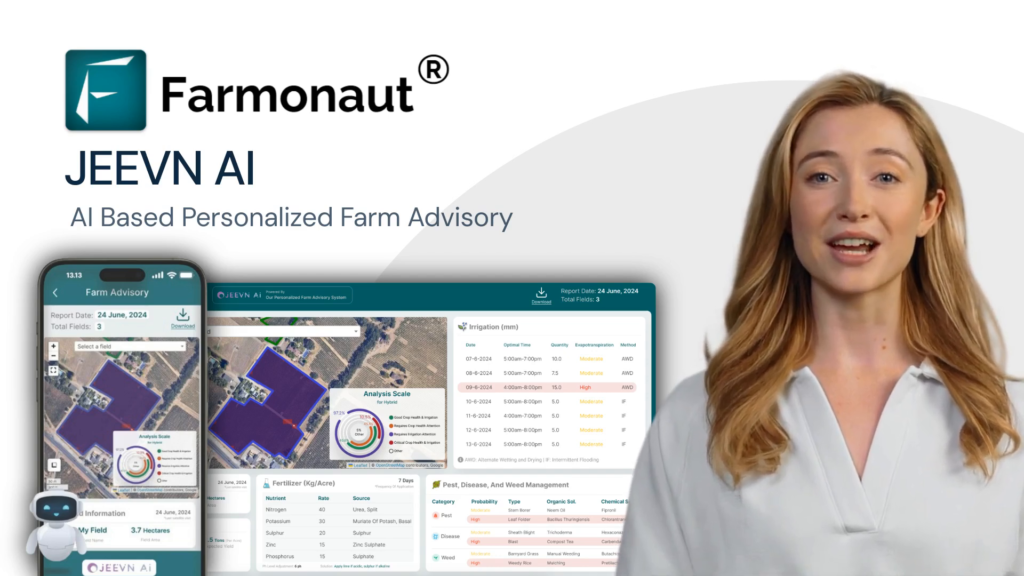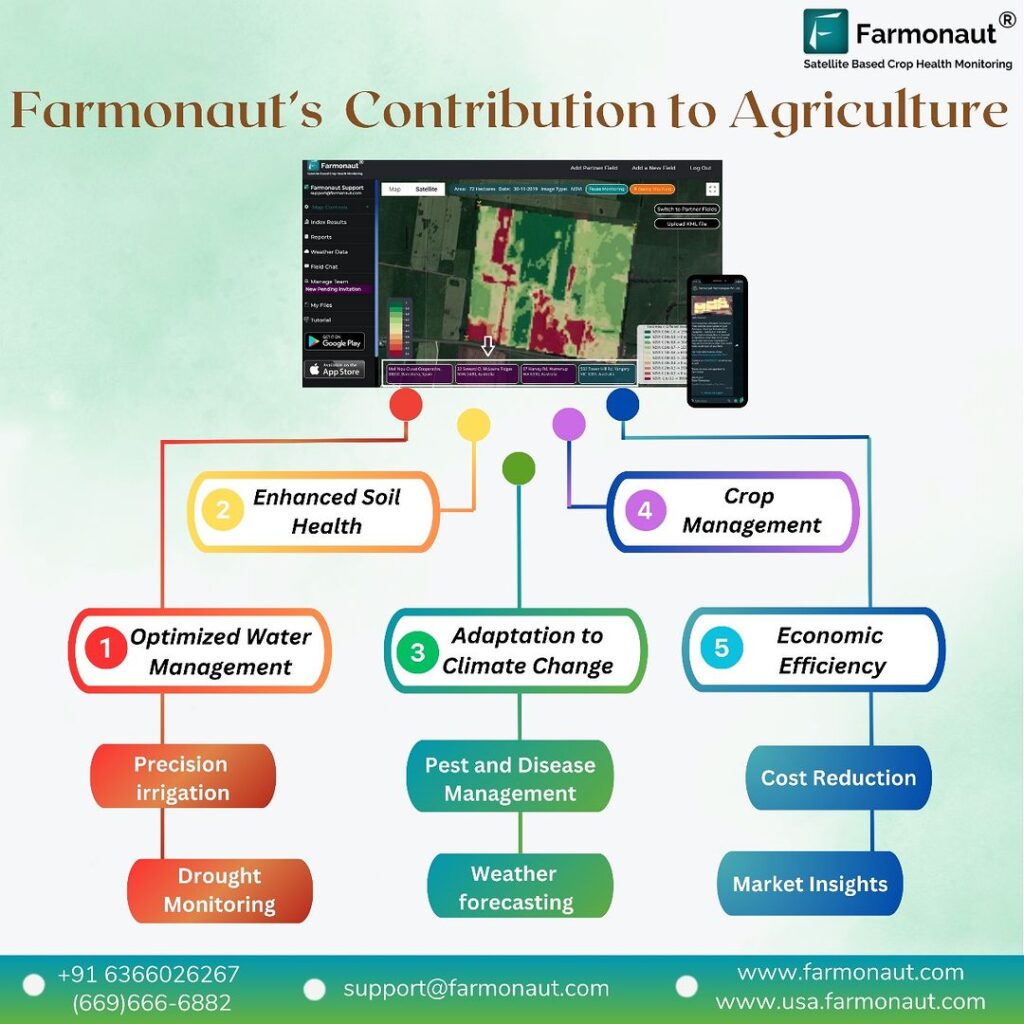USDA Disaster Assistance: Emergency Farm Loans Available for Maryland Farmers Affected by Drought and Extreme Heat
“St. Mary’s County, Maryland faced severe drought and extreme heat for 5 months, from June to October 2024.”
We understand the challenges that farmers in Maryland and surrounding areas are facing due to the recent severe drought and extreme heat conditions. As representatives of Farmonaut, we’re here to provide you with comprehensive information about the USDA disaster assistance and emergency farm loans now available to agricultural producers in St. Mary’s County and neighboring regions.
Understanding the Natural Disaster Designation
The U.S. Department of Agriculture (USDA) has officially declared St. Mary’s County, Maryland, as a primary natural disaster area. This designation comes in response to the significant drought and excessive heat experienced between June 22, 2024, and October 22, 2024. The impact of these extreme weather conditions has been widespread, affecting not only St. Mary’s County but also several adjacent jurisdictions.
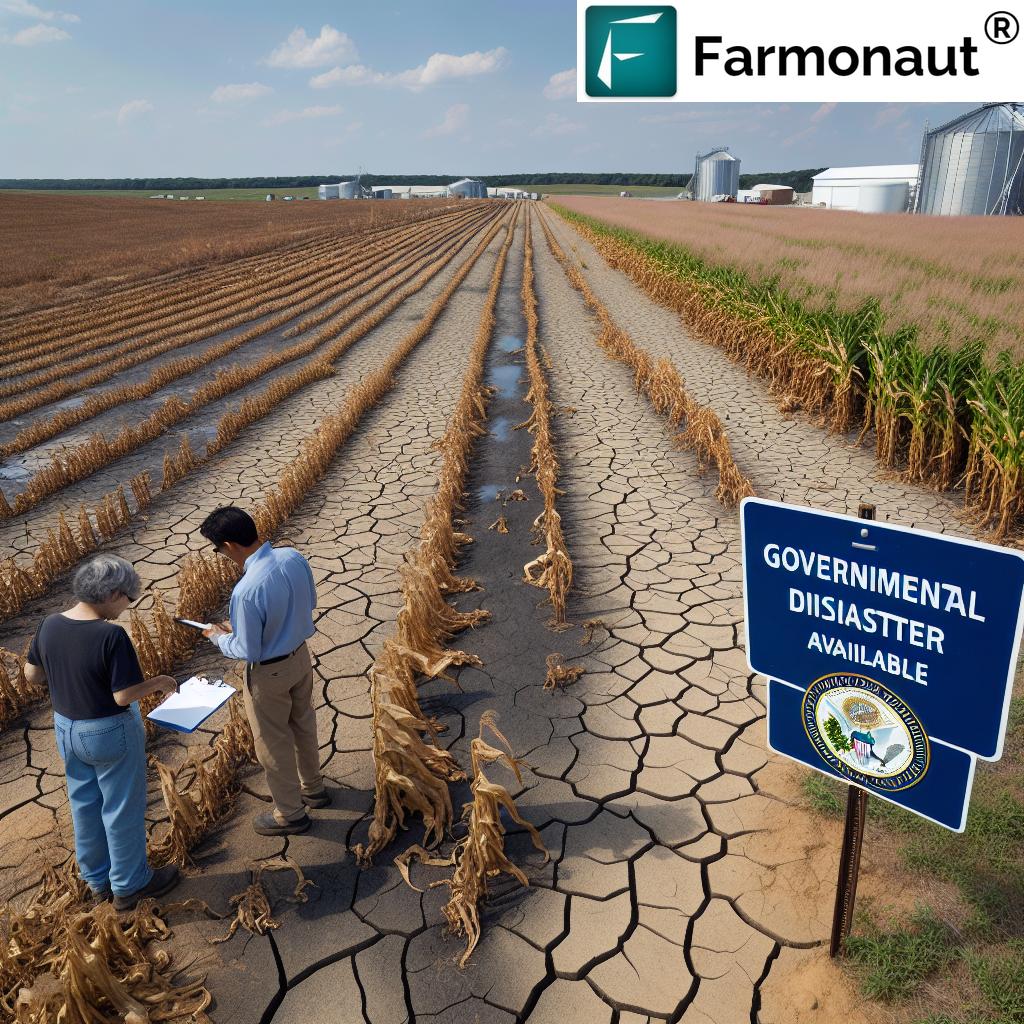
Emergency Farm Loans: A Lifeline for Affected Producers
The USDA’s Farm Service Agency (FSA) is stepping up to provide crucial support through emergency loans. These loans are designed to help eligible farmers and agricultural producers recover from the adverse effects of the extreme weather conditions. Here’s what you need to know about these emergency farm loans:
- Loan Purpose: To assist in various aspects of farming operations
- Eligible Uses:
- Replacing essential equipment
- Purchasing livestock
- Reorganizing farming practices
- Refinancing certain debts incurred due to the disaster
- Application Deadline: September 15, 2025
It’s important to note that the FSA will evaluate loan applications based on several factors:
- Specific losses incurred by the applicant
- Availability of collateral or security to back the loan
- Applicant’s ability to repay the loan
For more detailed information about USDA emergency loans, we recommend visiting the USDA FSA website.
Geographical Scope of the Disaster Assistance
The natural disaster area designation extends beyond St. Mary’s County, highlighting the widespread impact of the extreme weather conditions. Farmers in the following areas are also eligible for assistance:
Maryland Counties:
- Anne Arundel
- Baltimore
- Calvert
- Charles
- Dorchester
- Harford
- Prince George’s
Neighboring States:
- Delaware
- District of Columbia
- Pennsylvania
- Virginia
This wide-reaching assistance underscores the USDA’s commitment to supporting farmers across state lines when faced with environmental challenges.
Resources for Farmers: Navigating USDA Assistance
To help farmers explore their options and access the support they need, the USDA has provided several valuable resources:
- Disaster Assistance Discovery Tool: This online tool helps producers identify which USDA disaster assistance programs best suit their needs.
- Disaster Assistance-at-a-Glance Fact Sheet: A comprehensive overview of available programs and eligibility criteria.
- Loan Assistance Tool: Guides farmers through the loan application process and helps determine eligibility.
These resources can be accessed through the USDA Farmers website. We encourage all affected farmers to utilize these tools to explore their program options fully.
Steps for Farmers to Take
- File a Notice of Loss: This is a crucial first step in accessing disaster assistance.
- Inquire about eligibility: Contact your local USDA Service Center for personalized assistance.
- Gather necessary documentation: Prepare records of losses and financial information for the loan application process.
- Explore online resources: Use the USDA’s online tools to understand available programs.
- Submit your application: Remember, the deadline is September 15, 2025.
“USDA’s emergency farm loan program for Maryland farmers has an application deadline of September 2025, giving producers 15 months to apply.”
How Farmonaut Can Support Farmers During This Time
At Farmonaut, we’re committed to supporting farmers through challenging times. Our satellite-based farm management solutions can be particularly valuable for farmers recovering from drought and extreme heat conditions. Here’s how our technology can help:
- Real-time Crop Health Monitoring: Our satellite imagery can help you assess the impact of the drought on your crops and monitor recovery efforts.
- AI-based Advisory System: Receive personalized recommendations for managing your farm post-disaster.
- Resource Management Tools: Optimize your water and other resources as you work to recover your farm.
To learn more about how Farmonaut can assist you during this recovery period, visit our website or download our app:
Disaster Assistance Comparison Table
| Assistance Type | Eligibility Criteria | Application Deadline | Estimated Loan Amount Range | Covered Counties |
|---|---|---|---|---|
| Emergency Farm Loans | Farmers in designated disaster areas | September 15, 2025 | Up to $500,000 | St. Mary’s, Anne Arundel, Baltimore, Calvert, Charles, Dorchester, Harford, Prince George’s |
| Equipment Replacement | Farmers with damaged equipment due to disaster | September 15, 2025 | Varies based on equipment value | All designated counties |
| Debt Refinancing | Farmers with existing debts affected by disaster | September 15, 2025 | Based on existing debt | All designated counties |
| Neighboring States Assistance | Farmers in bordering states affected by the disaster | Varies by state | Varies by program | Delaware, District of Columbia, Pennsylvania, Virginia |
The Importance of Sustainable Farming Practices
As we navigate through these challenging times, it’s crucial to consider long-term strategies for resilience against extreme weather events. Sustainable farming practices can play a significant role in mitigating the impacts of future droughts and heat waves. Here are some approaches to consider:
- Water Conservation Techniques: Implementing efficient irrigation systems and drought-resistant crops.
- Soil Health Management: Practices like cover cropping and reduced tillage can improve soil moisture retention.
- Diversification: Growing a variety of crops can spread risk and improve overall farm resilience.
- Technology Adoption: Utilizing precision agriculture tools for more efficient resource use.
At Farmonaut, we’re dedicated to supporting sustainable agriculture through our technology. Our satellite-based monitoring can help you implement and track the effectiveness of these practices on your farm.
Community Support and Resources
During times of agricultural crisis, community support can be invaluable. We encourage farmers to:
- Connect with local agricultural extension offices for additional guidance and resources.
- Participate in farmer support groups or forums to share experiences and advice.
- Explore state-level programs that may complement federal assistance.
- Consider joining agricultural cooperatives for shared resources and support.
Remember, you’re not alone in facing these challenges. The agricultural community is known for its resilience and mutual support.
Looking Ahead: Climate Resilience in Agriculture
As we address the immediate needs of farmers affected by the recent drought and extreme heat, it’s also important to look towards the future. Climate change is likely to increase the frequency and severity of extreme weather events, making resilience a key factor in agricultural sustainability.
Here are some strategies for building long-term climate resilience in your farming operations:
- Climate-Smart Agriculture: Adopting practices that reduce greenhouse gas emissions while improving productivity.
- Crop Insurance: Exploring comprehensive insurance options to protect against future climate-related losses.
- Continuous Learning: Staying informed about emerging agricultural technologies and climate adaptation strategies.
- Infrastructure Investment: Improving farm infrastructure to better withstand extreme weather events.
At Farmonaut, we’re committed to supporting farmers in building climate-resilient operations. Our AI-driven insights can help you make informed decisions about crop selection, planting times, and resource management in the face of changing climate patterns.
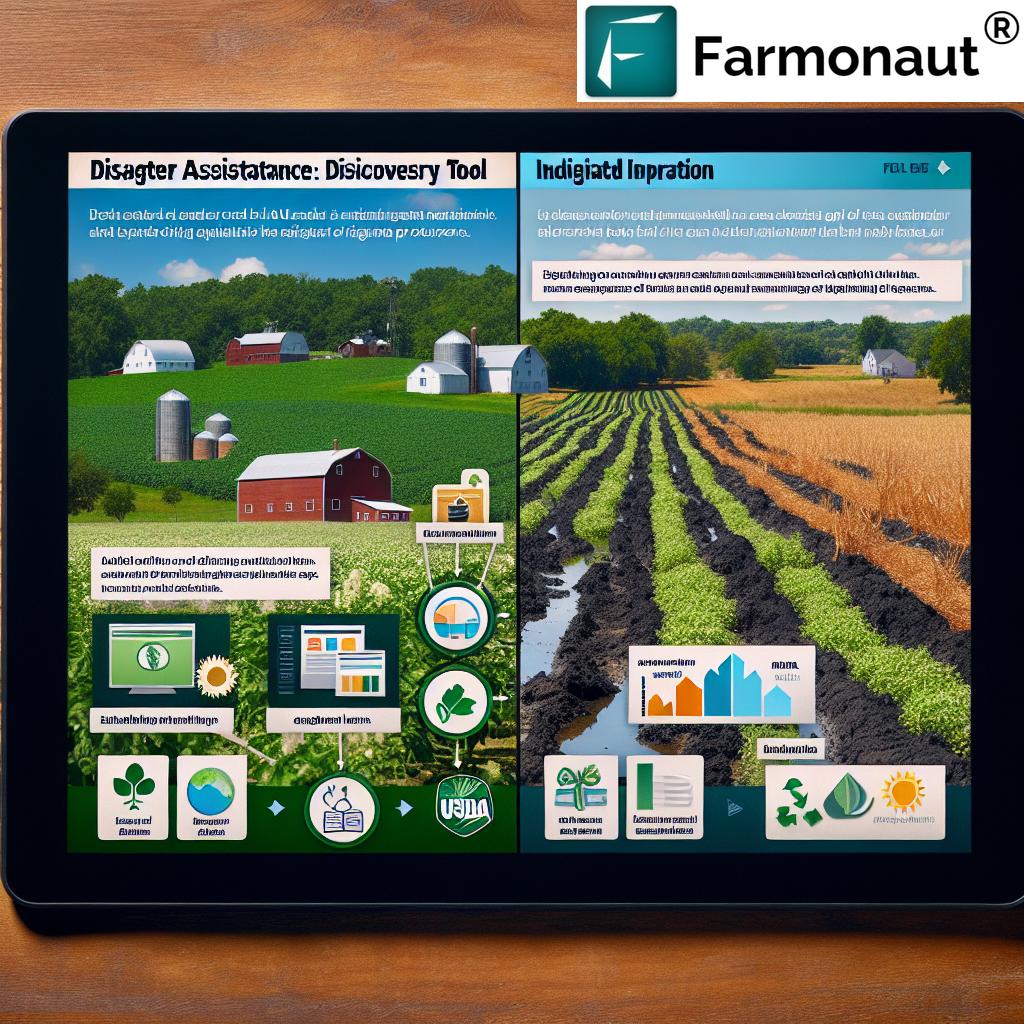
The Role of Technology in Agricultural Recovery
Technology plays a crucial role in helping farmers recover from disasters and build more resilient operations. Here’s how advanced agricultural technologies can support recovery efforts:
- Precision Agriculture: Optimize resource use and improve crop yields.
- Remote Sensing: Monitor crop health and soil conditions without physical inspection.
- Weather Forecasting: Access accurate, localized weather predictions for better planning.
- Data Analytics: Make informed decisions based on historical and real-time farm data.
Farmonaut’s platform integrates many of these technologies, providing farmers with a comprehensive tool for farm management and recovery. Our satellite-based monitoring and AI-driven insights can help you make data-driven decisions as you rebuild and strengthen your farming operations.
Financial Planning for Farm Recovery
Recovering from a natural disaster often requires careful financial planning. Here are some steps to consider:
- Assess the Damage: Conduct a thorough evaluation of your losses.
- Review Insurance Coverage: Understand what’s covered by your existing policies.
- Explore All Assistance Options: Look into federal, state, and local aid programs.
- Create a Recovery Budget: Plan for both immediate needs and long-term recovery.
- Consider Professional Advice: Consult with financial advisors or farm management specialists.
Remember, the USDA emergency farm loans are just one part of a comprehensive recovery strategy. It’s important to explore all available options and create a plan that addresses both your short-term needs and long-term sustainability goals.
Mental Health and Wellbeing for Farmers
Dealing with the aftermath of a natural disaster can be incredibly stressful. It’s important to prioritize mental health and wellbeing during this challenging time. Here are some resources and strategies:
- Farm Aid Hotline: Call 1-800-FARM-AID for support and resources.
- Local Support Groups: Connect with other farmers facing similar challenges.
- Stress Management Techniques: Practice mindfulness, exercise, or other stress-reduction methods.
- Professional Help: Don’t hesitate to seek counseling or therapy if needed.
Remember, taking care of your mental health is just as important as managing your farm’s recovery. A healthy mind leads to better decision-making and increased resilience.
Farmonaut Subscriptions
Frequently Asked Questions
Q: Who is eligible for USDA emergency farm loans?
A: Farmers in designated disaster areas who have suffered losses due to drought and extreme heat are eligible. This includes producers in St. Mary’s County and several surrounding counties in Maryland, as well as parts of neighboring states.
Q: What can the emergency loans be used for?
A: These loans can be used to replace essential equipment, purchase livestock, reorganize farming operations, or refinance certain debts incurred due to the disaster.
Q: When is the deadline to apply for these loans?
A: The application deadline is September 15, 2025.
Q: How does the FSA evaluate loan applications?
A: The FSA considers the specific losses incurred, the availability of collateral or security, and the applicant’s ability to repay the loan.
Q: Are there resources available to help me understand my options?
A: Yes, the USDA provides several online tools, including the Disaster Assistance Discovery Tool and the Loan Assistance Tool, available on the USDA Farmers website.
Q: How can Farmonaut help farmers recovering from this disaster?
A: Farmonaut offers satellite-based farm management solutions that can help assess crop health, provide AI-driven advice, and assist with resource management during the recovery process.
Conclusion
The USDA’s disaster assistance and emergency farm loans offer a crucial lifeline for Maryland farmers affected by the recent drought and extreme heat. By understanding the available resources, exploring all options, and leveraging technology like Farmonaut’s solutions, farmers can navigate this challenging period and work towards recovery and long-term resilience.
Remember, you’re not alone in this journey. The agricultural community, government agencies, and technology providers like Farmonaut are here to support you. By working together and embracing innovative solutions, we can build a more resilient and sustainable future for agriculture in Maryland and beyond.
For more information on how Farmonaut can support your farm’s recovery and future sustainability, visit our website or reach out to our team. Together, we can turn this challenge into an opportunity for growth and innovation in agriculture.






